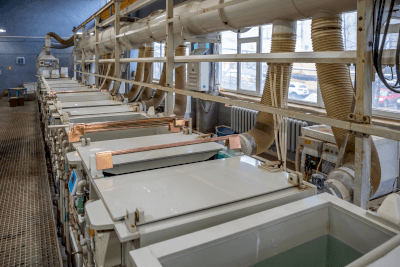What Is Surface Treatment?

Surface treatment includes a range of mechanical, chemical, and physical processing methods applied to the surface of workpieces for specific objectives.
Purposes of Surface Treatment
The primary purposes of surface treatment are as a preparatory step for subsequent machining and to enhance the workpiece’s value. This includes improving adhesion, mechanical strength, oxidation resistance, and insulation, as well as enhancing aesthetic appeal and gloss.
Uses of Surface Treatment
Various surface treatment techniques like polishing, etching, electroplating, vapor deposition, molten coating, diffusion, coating, and anodizing are used based on the material and desired outcome.
- Surface Polishing: Buff and barrel polishing for glossy finishes and surface smoothing.
- Etching: Used for degreasing and removing grease and oxide films before plating.
- Electroplating: Applied to eyeglass frames, household appliance frames, and mechanical components.
- Vapor Deposition: Used for forming thin metal films in semiconductor manufacturing.
- Molten Coating: Includes hot-dip galvanizing and thermal spraying for various industrial applications.
- Diffusion: Employed for creating alloy layers on iron and steel surfaces and in semiconductor manufacturing.
- Coating: Applying protective layers like paint or resin to prevent dirt, scratches, and oxidation.
- Surface Cleaning: Removing foreign substances and dirt, often as a pre-processing step.
- Anodizing: Enhancing wear and corrosion resistance, insulation properties, and thermal conductivity.
Principles of Surface Treatment
The principles of surface treatment vary depending on the method, ranging from mechanical polishing to chemical etching, electroplating, vapor deposition, surface cleaning, molten coating, diffusion, coating, and anodizing. Each technique has its specific mechanism and applications, catering to different industrial needs.